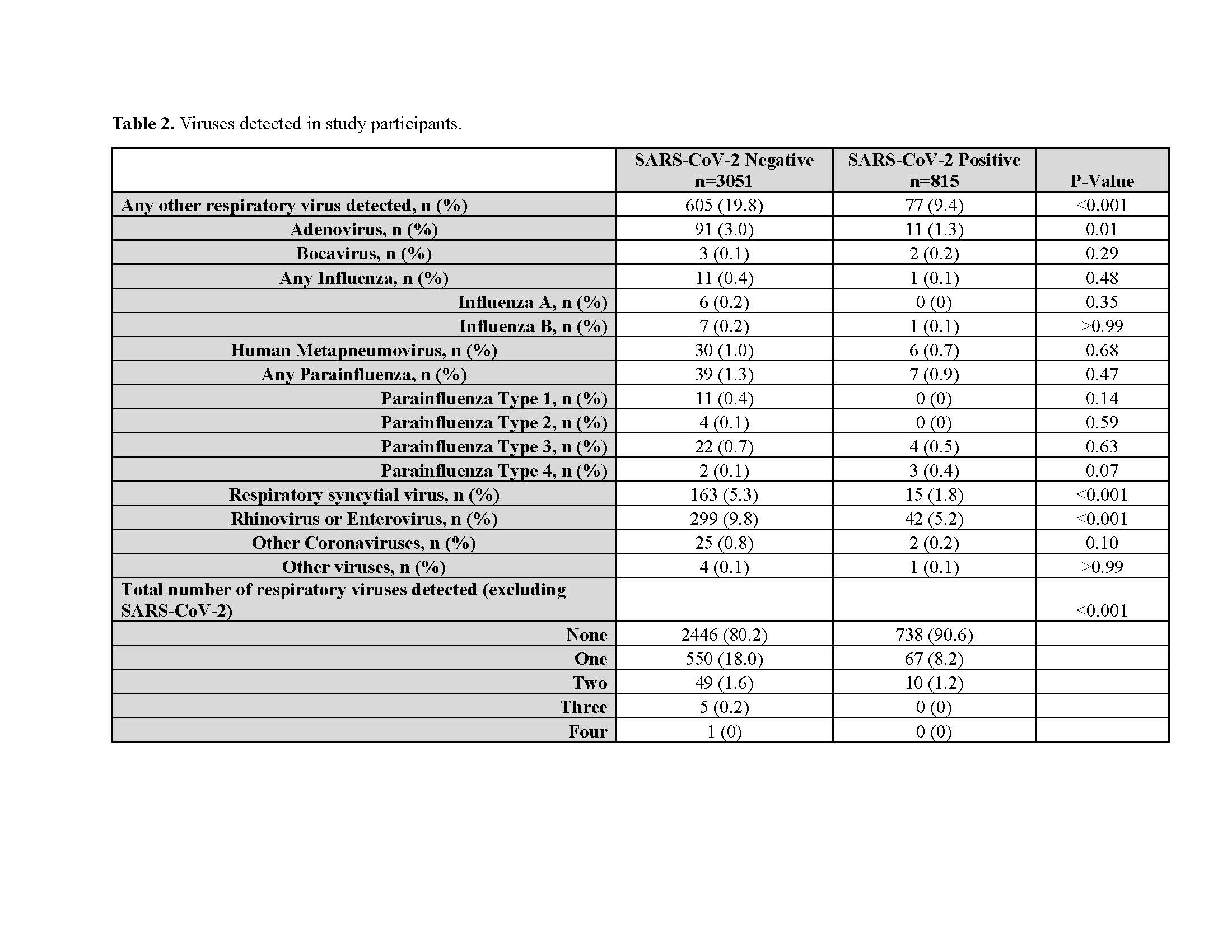Emergency Medicine
Session: Emergency Medicine 11: Potpourri
419 - Respiratory Virus Co-detection in SARS-CoV-2-Infected Children
Monday, May 6, 2024
9:30 AM - 11:30 AM ET
Poster Number: 419
Publication Number: 419.2945
Publication Number: 419.2945

Stephen Freedman, MDCM, MSc
Professor of Pediatrics and Emergency Medicine
University of Calgary
Calgary, Alberta, Canada
Presenting Author(s)
Background: With the re-emergence of typical seasonal respiratory viruses in children, there is a need to understand the clinical impact of SARS-CoV-2 virus co-detection alongside other respiratory viruses.
Objective: To determine 1)proportion of SARS-CoV-2 infected children with viral co-detections; 2)factors associated with co-detection; 3)association between SARS-CoV-2 viral co-detection and disease severity.
Design/Methods: This secondary analysis included data from two prospective cohort studies of children tested for SARS-CoV-2 infections. The studies were conducted between March 2020 and June 2021 in 41 EDs in 10 countries (global Pediatric Emergency Research Network) and 14 EDs across Canada between August 2020 and February 2022 (Pediatric Emergency Research Canada). Additional respiratory virus testing and pathogens included in the panels varied across study institutions. Exposures of interest were SARS-CoV-2 and additional respiratory viral co-detection. Outcome measures were respiratory virus co-detection and occurrence of severe outcomes which is a composite measure that includes intensive interventions, severe organ impairment, or death.
Results: We included 3866 participants with a median age of 2.0 years (IQR 0.5, 9.0). 815 (21.1%) were SARS-CoV-2 test-positive and 3051 (78.9%) were test-negative. The proportion of SARS-CoV-2 positive participants with viral co-detections was 9.4% (77/815; 95%CI: 7.5%, 11.7%). Rhinovirus or enterovirus were the most frequently co-detected viruses (5.2%; 42/815) among SARS-CoV-2 positive participants. In regression analyses, after adjustment for a priori identified covariates, although SARS-CoV-2 positive children were less likely to have an additional virus detected (aOR: 0.4; 95%CI: 0.3, 0.6), SARS-CoV-2 virus co-detection (vs. no co-detection) was associated with an increased odds of severe outcomes (aOR: 3.3; 95%CI: 1.5, 7.4). Among SARS-CoV-2 positive participants, characteristics independently associated with an increased likelihood of respiratory virus co-detection included age 1 to < 5 years (vs. age ≥12 years, aOR: 5.4; 95%CI: 1.9, 15.0), occurrence of a severe outcome (aOR: 3.3; 95%CI: 1.5, 7.2), infection with omicron (aOR: 2.6; 95%CI: 1.4, 5.1), and delta (aOR: 8.15; 95%CI: 3.4, 19.7) vs. wild type.
Conclusion(s): SARS-CoV-2 virus co-detection in children was infrequent. However, co-detection was associated with severe outcomes. Detection of additional respiratory viruses alongside SARS-CoV-2 will likely increase over time and it will be important to monitor the clinical impact of such findings to inform decision-making and public health measures.

.jpg)
.jpg)
